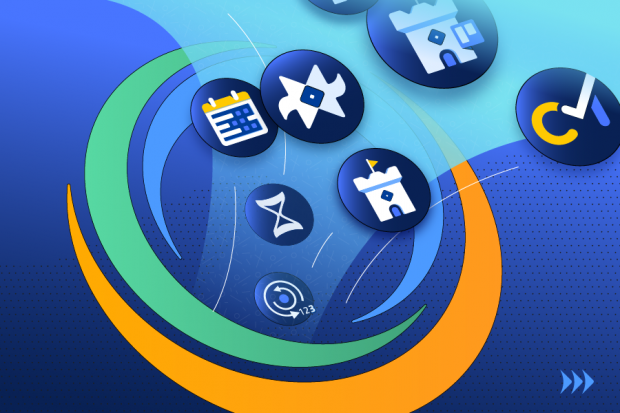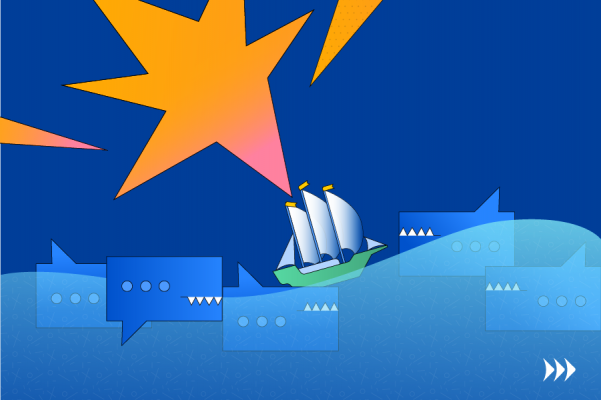All Articles
How to Succeed in Multiple Projects Management?
In the IT domain, working with distributed teams is routine practice. Such an approach may have several advantages.

It is an opportunity to:
- boost productivity and creativity,
- cast high-quality experts, and
- hire affordable talent.
General management rules stay the same with distributed teams:
- define goals,
- organize communication and collaboration,
- operate a plan-do-measure cycle,
- build a knowledge base, and
- ensure delivery.
What differs with distributed teams is that you communicate more frequently, and accurately assess, at every stage of product development, whether the delivery has met the expected quality levels. Still, the key point in providing effective management in a multi-project environment is to have a general picture of the overall process.
Challenges of several distributed teams management
Among all the aspects, building a shareable knowledge base seems to be the clearest, coherent, but the most time-consuming process. From a communication standpoint, you may face barriers with real-time messaging & meetings such as:
- a big difference in time-zones, especially when work schedules in the time-zones inconveniently overlap;
- asynchronous communication, and a need to record meetings;
- offline communication; and
- cultural differences.
At this point, every company and every team looks for a solution to fit their internal environment, therefore we will not dive further into this theme.
Rozdoum’s tools for the management of distributed teams:
- Slack for instant personal messaging, real-time meetings and group chats;
- Confluence for knowledge base sharing; and
- Jira for project management and issue tracking.

We are now approaching the main topic of this post, project management of distributed teams and the tools for tracking progress and measuring the results as a whole. Among the possible challenges, we can certainly identify a few of them.
Collaboration with different teams. You may have more than one project management tool to collaborate with each team separately. You will need to switch between multiple environments constantly. It takes a lot of time and effort, and the main problem is, you can’t grasp the entire picture of the progress made throughout the development for all of the projects at the same time.
Resources distribution. With several teams, it is harder to monitor the available resources. Some of your teams may be employed full-time, while others may be partially occupied because you are planning to load them with future projects. Moreover, you need to correlate the workflow with vacations, sick days, and with the workload of your “superhero-developer,” who can develop everything. A summary, including relevant data of the teams’ employment, is the key to coping with numerous resources.
Accurate estimation. While dealing with multiple teams, the potential risks of something going wrong may be high. You should evaluate the requirements of a project very carefully. Your rates and offered price should stay competitive. You need to meet the client’s expectations in functionality, quality, and terms, as well as earn a profit from the delivery and avoid additional payments for compensation fees. An overall picture of the progress that had been made during development helps when providing estimates accurately.
Performance control. Multiple projects are rarely at the same stage of development, and more often each task is running at its own pace and sometimes through different stages. Multi-team development requires efficient performance control, which is almost impossible without comprising the general picture.
At Rozdoum, we had often dealt with managing different projects in several external tracking tools. A project manager had to monitor a number of projects running in parallel in different environments. The Senior managers wanted to be on top of critical and important things on an even bigger number of projects. They needed to switch between management tools, logging in and out of each one, comparing critical and blocker points, distributing resources and assuring delivery. It is far from easy to build a clear and general picture under such circumstances. That is why, because we have experienced the aforementioned challenges firsthand, we could not stop ourselves from addressing them. WatchTower was released as our solution to several problems in distributed teams management.
WatchTower is a time saver for performance tracking
WatchTower (WT) collects issues from several Jira instances, regardless of their hosting (Cloud or Server) and versions, and organizes them into a single agile board. One agile board is a solution to the challenge: getting the big picture of the development process for all teams to see.
- You can save time on context switching between environments. WT will gather tasks from several projects on one Agile Jira board. You can work as usual: move issues to reflect a status change, fill details of transitions, report time and comment on issues. WT saves up to 1 hour daily when working on 3 projects.
- The consolidated view of WatchTower’s board allows for the mapping of your logical flow in columns to whatever statuses they have in their original workflows in their respected remote Jiras. Swimlanes add more structure to the picture allowing for a visual separation of sources.
- A clear overall picture and simplicity of usage can easily be achieved with custom source descriptors, color separation, and cross-references between issues from different Jiras.
- Should you need to share your WatchTower board with a team — you have an option of different access levels to reflect possible permitted actions:
- View Only — read & view only access;
- Comment and WorkLog — an option to comment and add worklogs on the issues on behalf of a board admin; and
- Do Transitions — a permission for changing statuses as well as logging time and leaving comments.
WatchTower gives a consolidated view of external tracking tools and allows users to save time and avoid switching between different environments.
If you are looking for a tool to simplify the management of distributed teams and your main concern is the absence of an overview, Watchtower may be the tool to gather it for you. You are welcome to test the app from Marketplace or request a demo, and we would be happy guide you through it.

Stay on Top of the Latest IT Software Development Tips, Newest Offshore Trends, and Best Outsourcing Practices.



